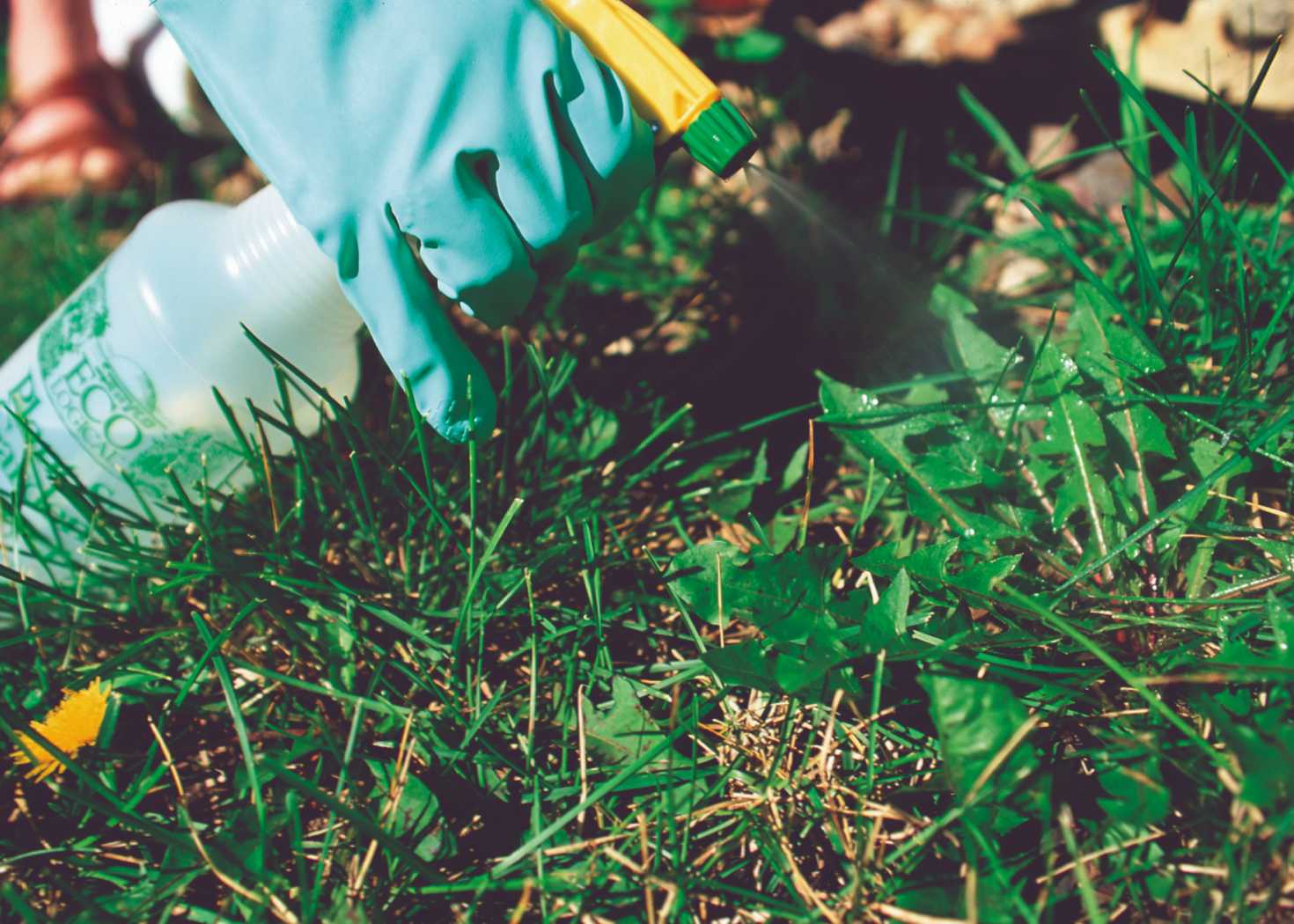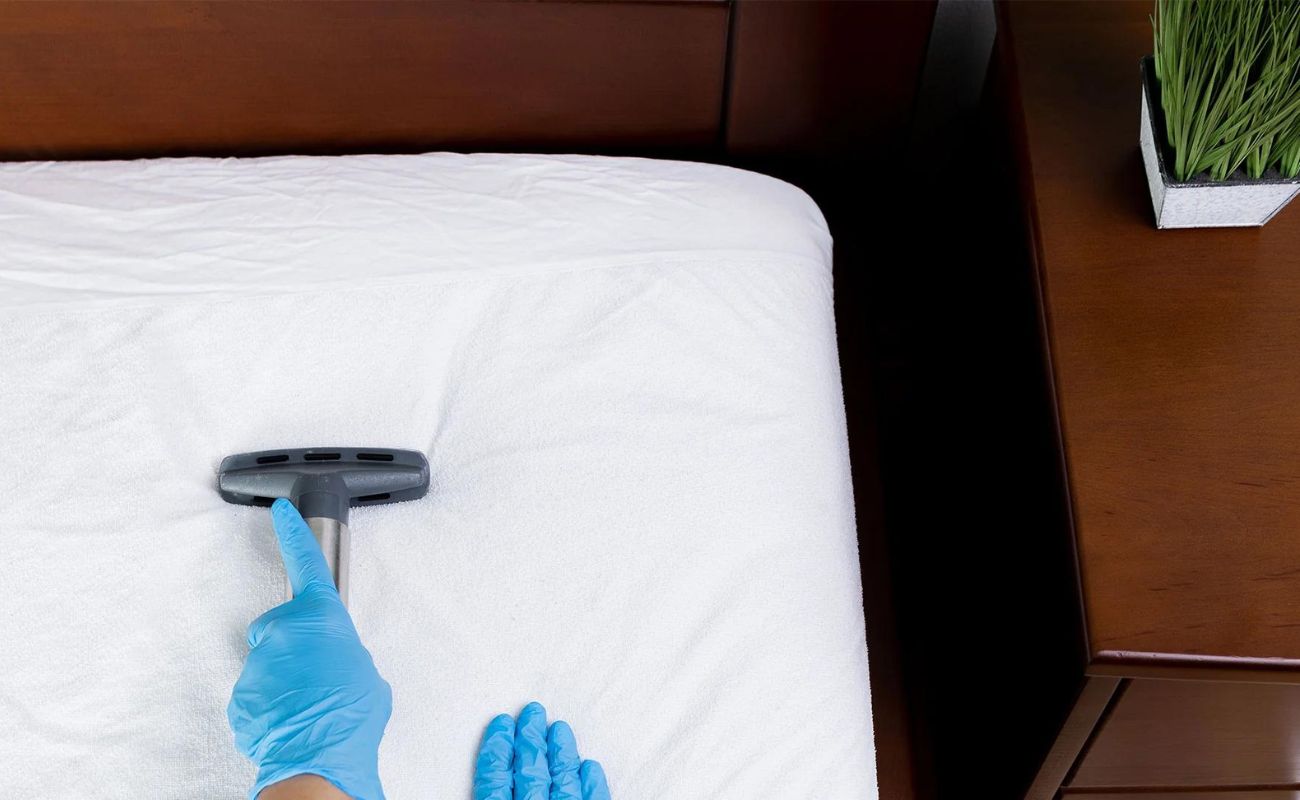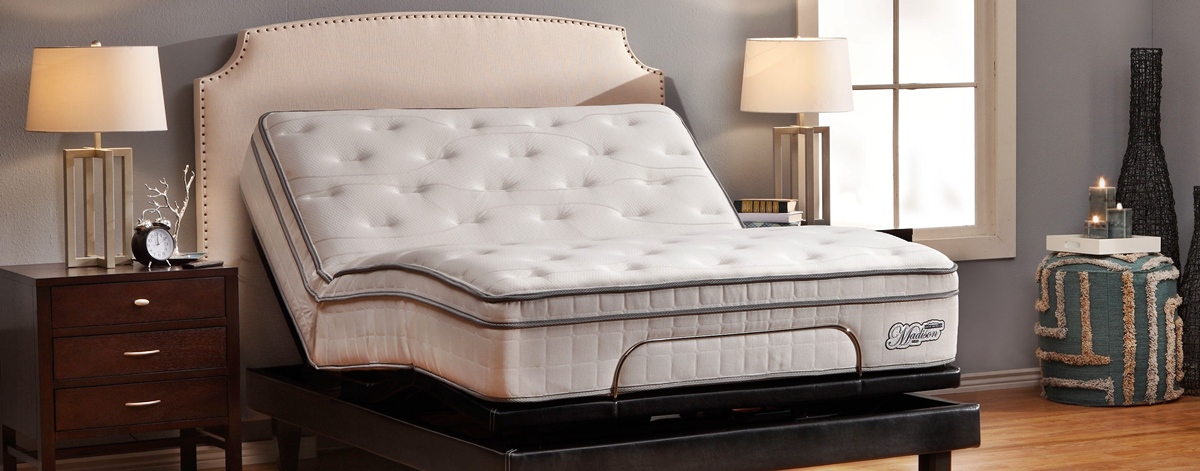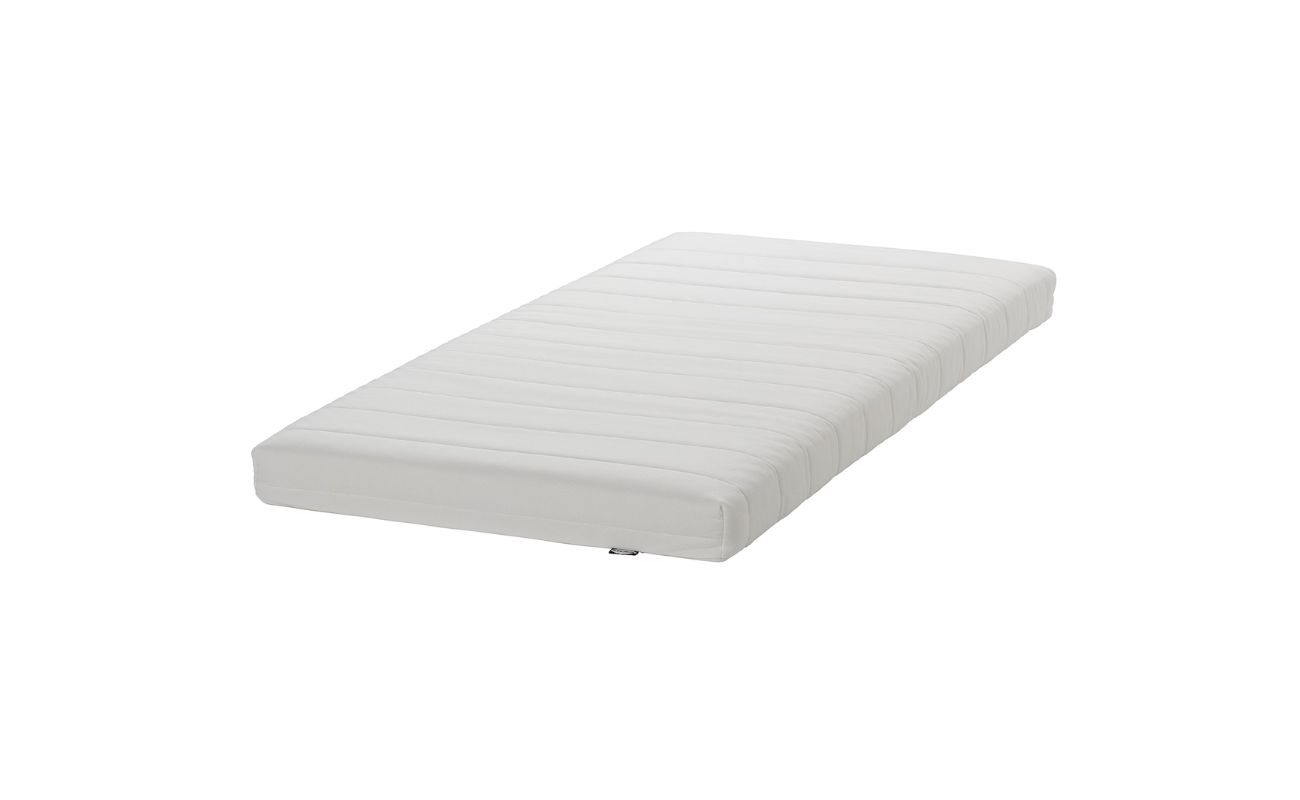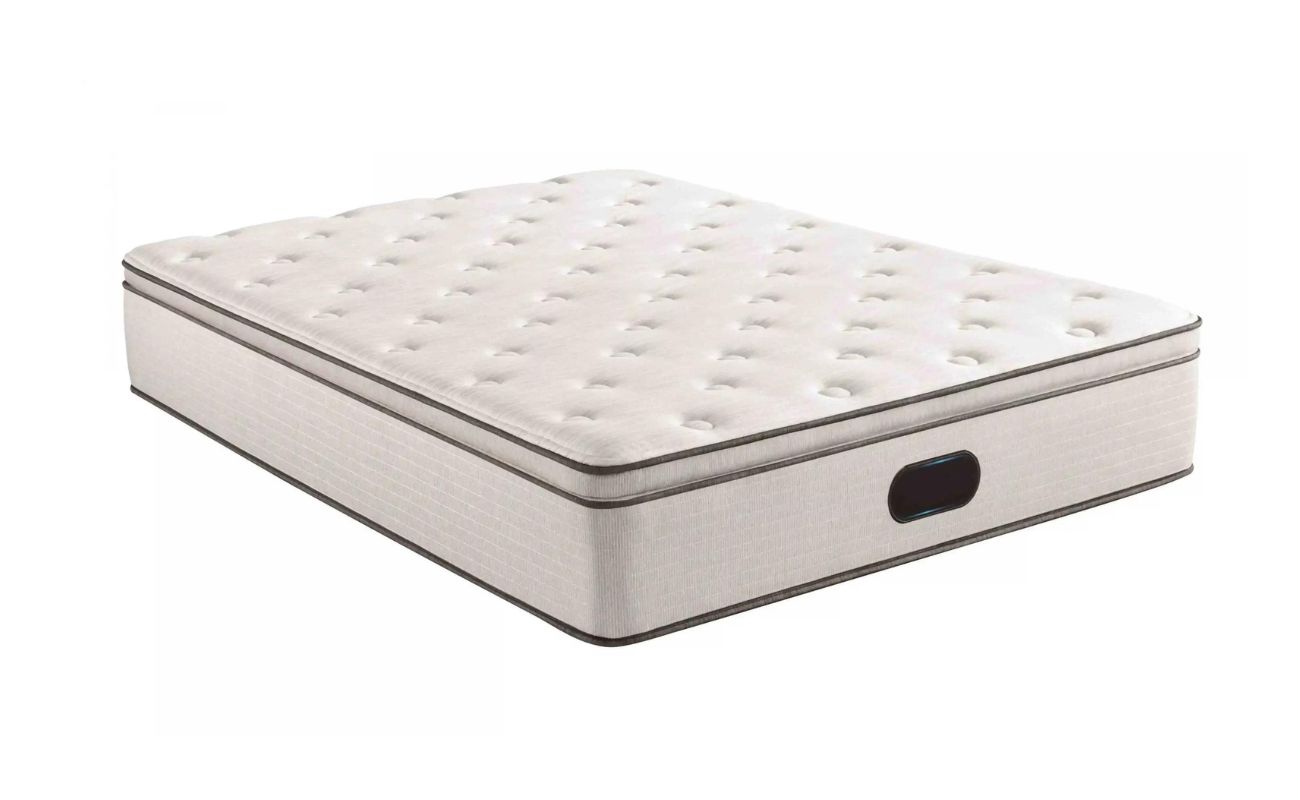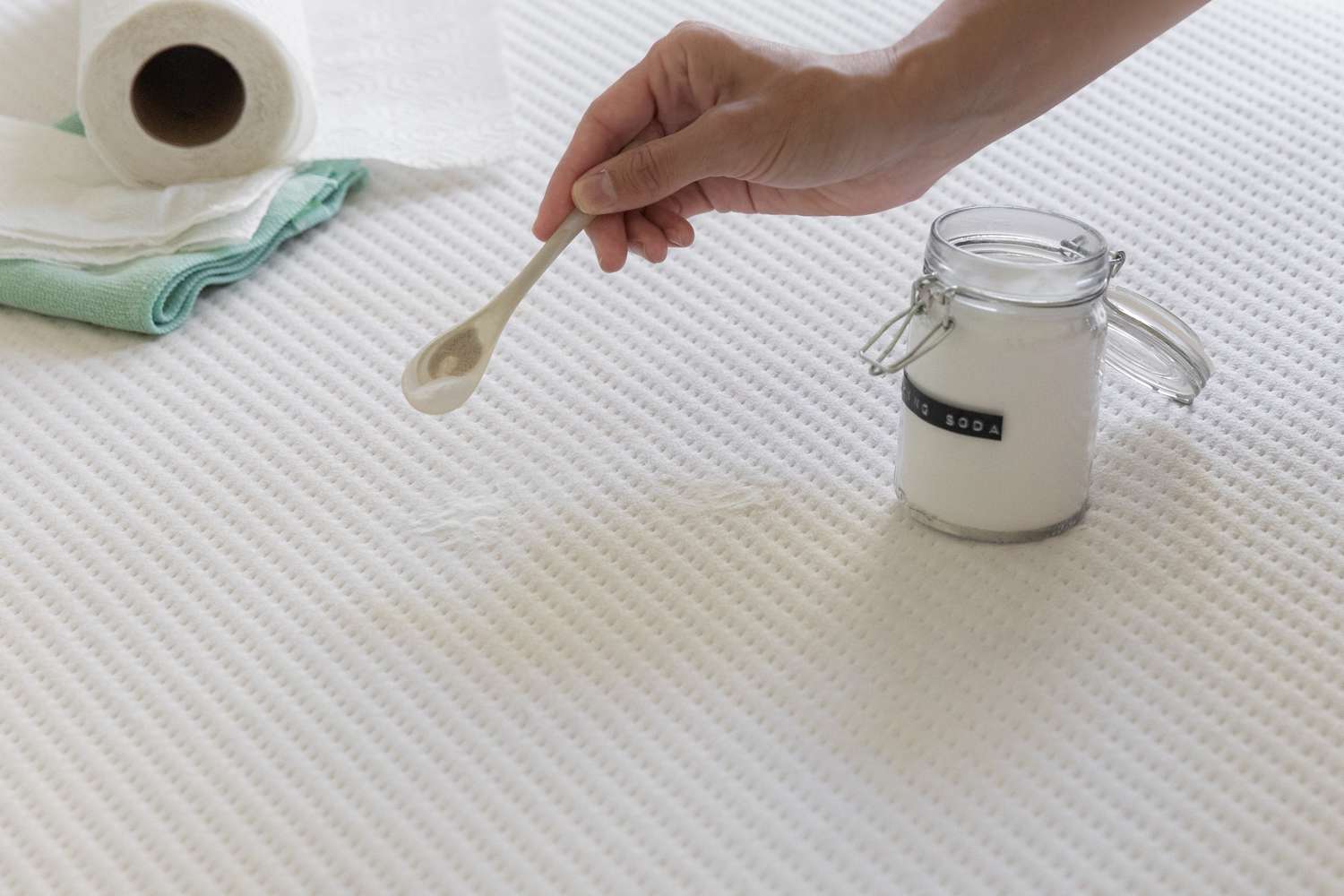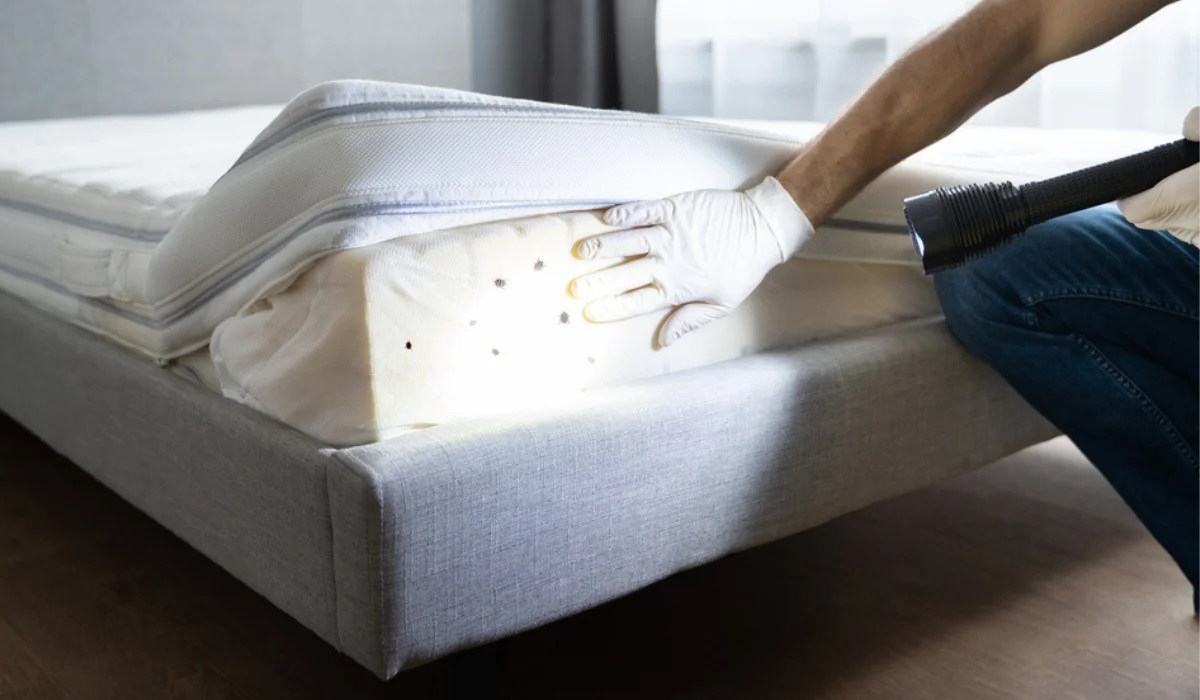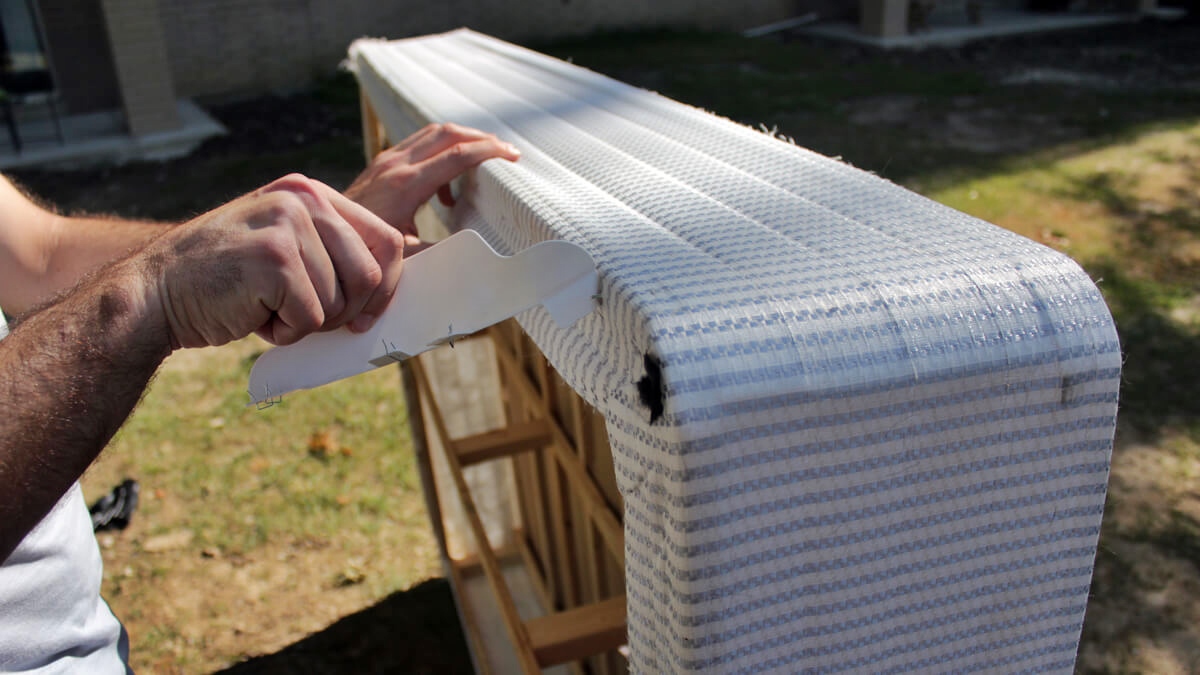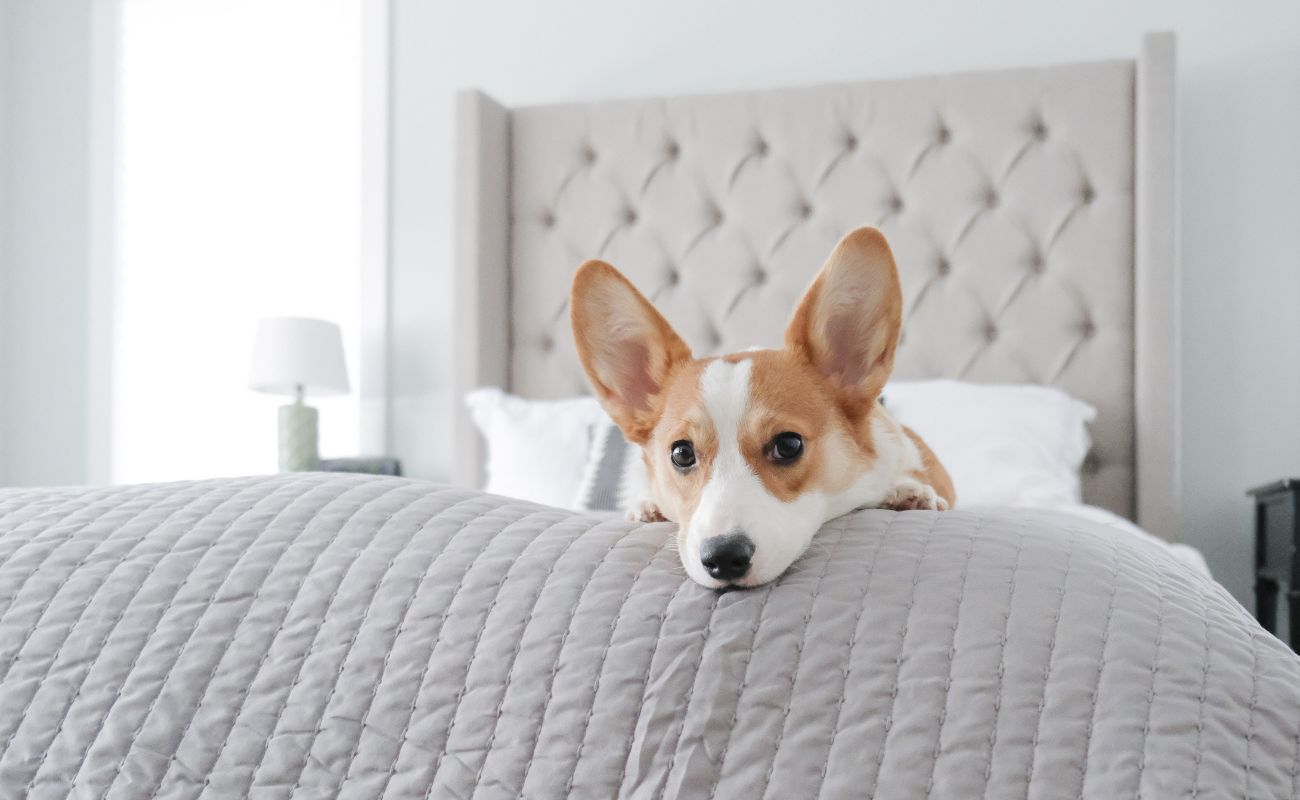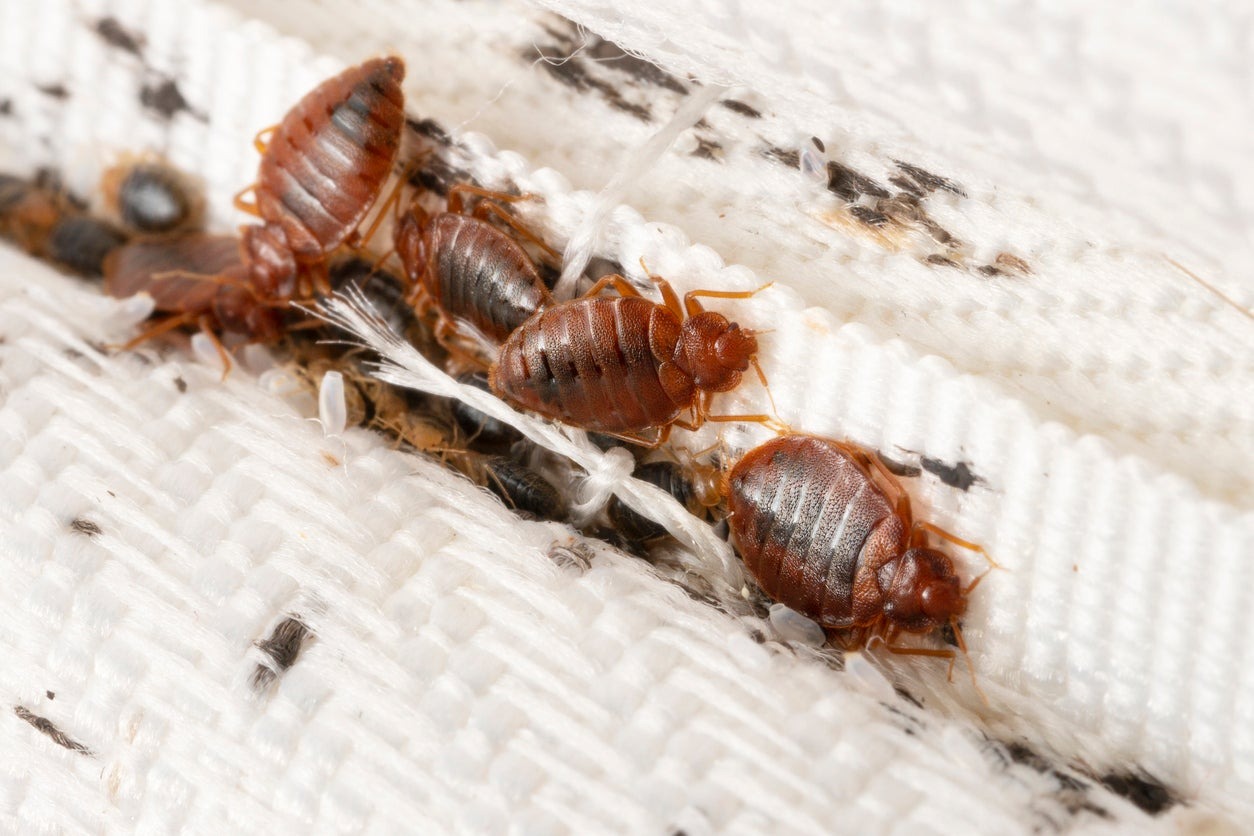Home>Furniture>Bedroom Furniture>How To Get Rid Of Fleas On A Mattress
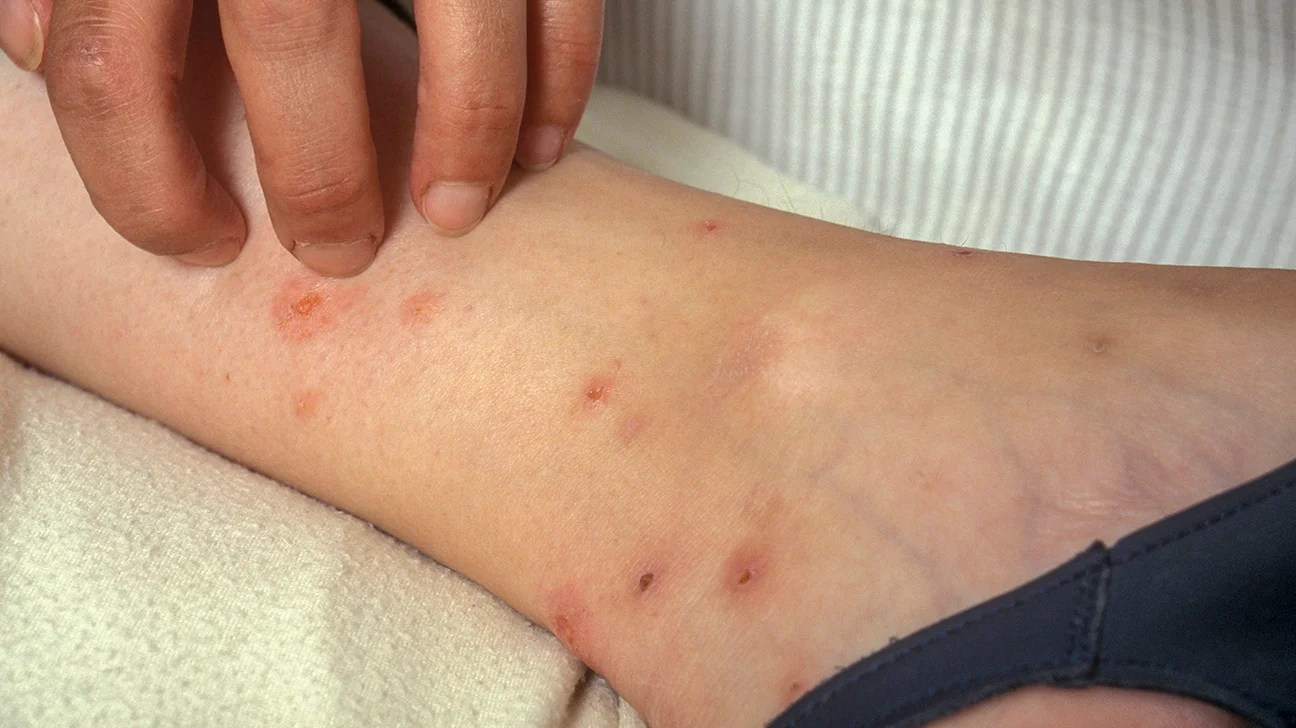

Bedroom Furniture
How To Get Rid Of Fleas On A Mattress
Modified: August 21, 2024
Learn how to effectively get rid of fleas on a mattress with our expert tips and tricks. Protect your bedroom furniture and keep your sleep environment clean and pest-free.
(Many of the links in this article redirect to a specific reviewed product. Your purchase of these products through affiliate links helps to generate commission for Storables.com, at no extra cost. Learn more)
Introduction
Welcome to our comprehensive guide on how to get rid of fleas on a mattress. Flea infestations are not only annoying but can also be a major health concern for you and your family. These tiny pests can multiply rapidly and make your mattress their breeding ground if left untreated.
In this article, we will delve into the world of fleas, helping you understand their behavior and the signs of a flea infestation on your mattress. We will also provide you with practical and effective methods to eliminate fleas from your mattress, including natural remedies, insecticides, vacuuming, and steam cleaning. Additionally, we’ll discuss professional pest control services and share some preventive tips to keep fleas away from your mattress.
So, if you’re tired of those itchy bites and want to restore your mattress to its clean and comfortable state, keep reading to discover the best ways to get rid of fleas and enjoy a peaceful night’s sleep.
Key Takeaways:
- Say goodbye to flea infestations on your mattress by understanding flea behavior, preparing your mattress for treatment, and using natural remedies or professional pest control services.
- Keep fleas away from your mattress with preventive measures like regular cleaning, pet grooming, and using flea repellents, ensuring a clean and comfortable sleeping environment.
Read more: How To Get Rid Of Fleas On Carpet
Understanding Fleas
Fleas are small, wingless insects that are known for their ability to jump long distances. These parasitic creatures feed on the blood of animals, including cats, dogs, and even humans. While they may be tiny in size, their presence can cause significant discomfort and health issues for both humans and pets.
Fleas have a lifespan of about 2-3 months, during which time they go through four stages of development: egg, larva, pupa, and adult. Female fleas can lay hundreds of eggs on a host or in the surrounding environment, including your mattress.
Once eggs hatch, larvae emerge and start feeding on organic debris, such as flea feces and dead skin cells. After several molts, the larvae spin cocoons and enter the pupal stage. In this stage, they undergo metamorphosis and eventually develop into adult fleas.
Adult fleas are well-equipped to jump onto passing hosts, using their strong hind legs to propel themselves. Once on the host, they begin feeding on blood and start the lifecycle once again.
Understanding the lifecycle and behavior of fleas is essential for effective eradication. It’s important to note that adult fleas spend most of their time on the host but may jump onto nearby surfaces, including your mattress, in search of blood meals or to lay eggs.
Now that we have a basic understanding of fleas, it’s time to move on to the signs of a flea infestation on your mattress and how to identify them.
Signs of a Flea Infestation on Your Mattress
Discovering a flea infestation on your mattress can be quite distressing. These pesky insects can rapidly multiply and cause discomfort and irritation to both humans and pets. Therefore, it’s important to be aware of the signs that indicate a flea infestation on your mattress. Here are some key indicators to look out for:
- Bite marks on your body: One of the most obvious signs of a flea infestation is waking up with multiple itchy bite marks on your body. Flea bites typically appear as small red bumps surrounded by a reddened halo and are usually found in clusters or in a linear pattern.
- Visible fleas: In some cases, you may be able to spot adult fleas crawling on your mattress. These tiny insects are dark brown or reddish-brown and are about 2-3 mm in length. Inspect your mattress closely, paying attention to dark crevices and seams.
- Flea dirt: Flea dirt, also known as flea feces, is a telltale sign of a flea infestation. It looks like tiny black specks resembling ground pepper and is typically found on your mattress, bedding, or clothing. To confirm if it’s flea dirt, you can perform a simple test by dampening a white tissue or paper towel and placing the specks on it. If they turn red or rust-colored when wet, it is a sign of flea dirt since it consists of digested blood.
- Pet scratching: If you have pets, their continuous scratching, biting, or excessive grooming can be a sign of flea infestation. Fleas are common in cats and dogs, and if they have access to your mattress, they can easily transfer fleas onto it.
- Musty odor: Fleas emit a distinct musty odor that can be quite noticeable if you have a significant infestation. If you notice a pungent smell on or near your mattress, it could be an indication of fleas.
If you observe any of these signs, it’s crucial to take immediate action to eliminate the fleas and prevent further infestation. In the next section, we will explore the steps you need to take to prepare your mattress for treatment.
Preparing Your Mattress for Treatment
Before you begin the process of eliminating fleas from your mattress, it’s important to properly prepare it for treatment. Taking the time to prepare your mattress will ensure that the treatment methods you use are more effective and yield better results. Follow these steps to prepare your mattress:
- Remove all bedding: Start by removing all bedding, including sheets, pillowcases, and mattress protectors. Wash them in hot water to kill any fleas or eggs that may be present.
- Vacuum your mattress: Use a vacuum cleaner with a strong suction power and a brush attachment to thoroughly vacuum your mattress. Pay close attention to the seams, crevices, and any cracks where fleas might be hiding. This will help remove adult fleas, eggs, larvae, and their food sources. After vacuuming, immediately dispose of the vacuum bag or empty the canister in an outdoor trash bin to prevent re-infestation.
- Seal your mattress: Encase your mattress in a tightly-sealed, zippered mattress cover designed specifically for bed bug and allergen protection. This will prevent fleas from escaping and re-infesting your mattress after treatment.
- Wash or treat infested items: If you identified any bedding or fabric items that are infested with fleas, wash them in hot water or treat them with appropriate insecticides as per the manufacturer’s instructions.
- Clear the surrounding area: Remove any clutter or items near your mattress to create a clear space for treatment. This will make it easier to access and treat the entire mattress surface and reduce the chances of re-infestation.
By following these steps, you’ll be able to effectively prepare your mattress for treatment, ensuring that the methods you choose to get rid of fleas are more successful. In the next section, we’ll explore natural remedies that can help eliminate fleas from your mattress without the use of harsh chemicals.
Natural Remedies for Flea Removal
If you prefer to use natural methods to eliminate fleas from your mattress, there are several effective remedies you can try. These natural remedies are safe for you, your family, and your pets, while still being powerful enough to combat fleas. Here are some natural methods to consider:
- Diatomaceous earth: Diatomaceous earth is a fine powder made from fossilized algae. It works by dehydrating fleas and causing them to die. Sprinkle a generous amount of food-grade diatomaceous earth onto your mattress, focusing on areas where fleas may be concentrated. Leave it on for a few hours or overnight, then vacuum it up. Repeat this process every few days until the flea infestation is gone.
- Baking soda: Baking soda is a natural and affordable remedy for flea removal. Sprinkle baking soda over your mattress and gently rub it in using a brush. Leave it on for a few hours to absorb odors and pests, then vacuum it thoroughly. Repeat this process as needed to eliminate fleas and neutralize any unpleasant smells.
- Lemon spray: Lemons contain a natural substance called limonene, which is toxic to fleas. Make a lemon spray by boiling thinly sliced lemons in water for about 10 minutes. Let the mixture cool, then strain it into a spray bottle. Spray the lemon solution on your mattress, paying attention to areas where fleas are likely to hide. Repeat this process regularly to repel fleas.
- Essential oils: Certain essential oils have flea-repellent properties. Dilute a few drops of lavender, eucalyptus, or peppermint essential oil in water and spray it on your mattress. Alternatively, you can soak cotton balls in the diluted solution and place them near your mattress to deter fleas. Remember to reapply the oils periodically to maintain their effectiveness.
- Salt: Salt is another simple yet effective remedy for flea removal. Sprinkle table salt generously over your mattress, focusing on areas where fleas are likely to be present. Leave it on for a few days, then vacuum it thoroughly. The salt dehydrates the fleas, causing them to perish.
It’s important to note that natural remedies may take some time and repeated applications to completely eliminate a flea infestation. Regularly monitor your mattress and continue the chosen natural method until all signs of fleas are gone. If the infestation persists or worsens, you may need to consider using insecticides and chemical treatments, as we will discuss in the next section.
Vacuum the mattress thoroughly, paying special attention to seams and crevices where fleas may hide. Then, use a mattress encasement to trap any remaining fleas and prevent re-infestation.
Read more: How To Get Rid Of Fleas In Furniture
Using Insecticides and Chemical Treatments
If natural remedies haven’t been effective in eliminating fleas from your mattress, you may need to consider using insecticides and chemical treatments. These products are specifically formulated to kill fleas and their eggs, providing a more powerful solution to your flea infestation problem. Here are some options to consider:
- Insecticide sprays: There are numerous insecticide sprays available that are designed to target fleas. Look for sprays that are labeled specifically for indoor use and safe for mattresses. Carefully follow the instructions on the product, making sure to treat your entire mattress, including the seams and crevices. Remember to ventilate the room and allow the mattress to dry completely before using it again.
- Insecticide powders: Insecticide powders can be applied directly to your mattress to kill fleas. Make sure to choose a powder that is safe for indoor use and labeled for use on mattresses. Apply the powder evenly onto the mattress, paying close attention to flea-prone areas. Leave it on for the recommended duration, typically a few hours, then thoroughly vacuum your mattress to remove the powder along with dead fleas.
- Foggers or bug bombs: Foggers or bug bombs release a fine mist of insecticides that can penetrate and treat an entire room, including your mattress. Before using a fogger, carefully read and follow the instructions on the packaging. Vacate the room, seal it off, and activate the fogger as directed. After the specified time, ventilate the room and thoroughly clean your mattress before using it again.
- Professional pest control: If your flea infestation is severe or persists despite your efforts, it may be time to seek the assistance of professional pest control services. Pest control experts have specialized knowledge and access to more potent treatments to effectively eradicate fleas from your mattress and home. They can assess the situation, determine the most appropriate treatment method, and ensure the safety of your mattress and household.
When using insecticides and chemical treatments, always prioritize safety. Keep children, pets, and yourself away from treated areas until the product has dried or as instructed by the manufacturer. Follow all safety precautions and usage instructions provided on the product labels.
Now that you have explored various treatment options, let’s dive into the importance of vacuuming and steam cleaning your mattress in the next section.
Vacuuming and Steam Cleaning Your Mattress
Vacuuming and steam cleaning your mattress are crucial steps in the process of eliminating fleas and keeping your sleeping surface clean and hygienic. These methods help remove adult fleas, larvae, eggs, and other debris that may be present on your mattress. Here’s how you can effectively vacuum and steam clean your mattress:
- Vacuuming: Start by using a vacuum cleaner with a strong suction power and an upholstery attachment. Begin at one end of your mattress and slowly move the attachment in a back-and-forth motion across the entire surface. Pay close attention to seams, crevices, and corners where fleas and their eggs tend to accumulate. Make sure to vacuum both the top and bottom sides of the mattress. After vacuuming, immediately dispose of the vacuum bag or empty the canister in an outdoor trash bin to prevent re-infestation.
- Steam cleaning: Steam cleaning can effectively kill fleas, their eggs, and larvae by subjecting them to high temperatures. Use a steam cleaner specifically designed for upholstery and follow the manufacturer’s instructions. Slowly move the steam cleaner across the surface of your mattress, paying special attention to areas where fleas are likely to hide. Ensure that the steam penetrates deeply into the mattress fabric to eliminate any pests. It’s important to allow your mattress to dry completely before using it again.
Both vacuuming and steam cleaning should be repeated regularly to maintain a clean and flea-free mattress. It’s recommended to vacuum your mattress at least once a week, especially if you have pets or live in a high-risk area for fleas.
Remember, vacuuming and steam cleaning alone may not be sufficient to eliminate a severe flea infestation. It’s important to incorporate other treatment methods, such as natural remedies or chemical treatments, depending on the extent of the infestation.
In the next section, we’ll discuss the option of seeking professional pest control services for severe or persistent flea infestations.
Professional Pest Control Services for Flea Infestations
While there are numerous DIY methods available to eliminate fleas from your mattress, sometimes a severe or persistent infestation may require the expertise of professional pest control services. Pest control professionals have the knowledge, experience, and tools necessary to effectively eradicate fleas and prevent future infestations. Here’s why you may want to consider seeking professional help:
- Thorough assessment: Pest control experts will conduct a comprehensive inspection of your home, including your mattress, to identify the extent of the flea infestation. They have the expertise to identify hiding spots, breeding areas, and entry points that may go unnoticed by untrained eyes.
- Targeted treatments: Pest control professionals employ specialized treatments that are specifically designed to target and eliminate fleas. They have access to effective insecticides and treatment methods that may not be readily available to consumers. These treatments are often stronger and more potent, ensuring a higher success rate in exterminating the fleas.
- Safe and controlled application: Professional pest control technicians have the necessary training to handle and apply insecticides safely. They follow strict protocols and use precautions to protect your health and the environment while effectively eliminating fleas from your mattress and home.
- Preventive measures: In addition to treating the immediate flea infestation, pest control professionals can provide valuable advice and preventive measures to help you avoid future infestations. They can recommend steps to limit flea entry points, suggest pet treatments and preventive measures, and offer guidance on maintaining a clean and flea-free environment.
- Guaranteed results: Many professional pest control services offer guarantees on their treatments. This means that if the flea infestation persists or reoccurs within a specified period, they will return and provide additional treatments at no extra cost. This ensures peace of mind and reassurance that the problem will be effectively resolved.
When selecting a professional pest control service, make sure to choose a reputable and licensed company with experience in dealing with flea infestations. Research customer reviews, ask for recommendations, and compare prices and services to find the best option for your needs.
By enlisting the help of professional pest control services, you can significantly increase the chances of successfully eliminating fleas from your mattress and preventing future infestations.
Now that we’ve explored the option of professional pest control, let’s move on to the preventative measures you can take to keep fleas away from your mattress.
Prevention Tips to Keep Fleas Away from Your Mattress
Preventing fleas from infesting your mattress is crucial to maintaining a clean and pest-free sleeping environment. Here are some preventive measures you can take to keep fleas away:
- Maintain a clean home: Regularly clean your home, including vacuuming carpets, rugs, and upholstered furniture. This helps remove flea eggs, larvae, and debris that may be present in the environment.
- Wash bedding frequently: Wash your bedding, including sheets, pillowcases, and mattress protectors, in hot water on a regular basis. This kills any fleas or eggs that may be present on these items.
- Use flea prevention products for pets: If you have pets, make sure to use flea prevention products, such as topical treatments or flea collars, as recommended by your veterinarian. Regularly check your pets for fleas and promptly treat any infestations to prevent them from spreading to your mattress.
- Keep outdoor areas clean: Reduce the risk of fleas entering your home by keeping outdoor areas clean and free of debris. Trim grass and shrubs regularly and remove any potential hiding spots for fleas, such as leaf piles or woodpiles.
- Seal entry points: Inspect your home for possible entry points for fleas, such as gaps or cracks in windows, doors, or walls. Seal any openings to prevent fleas from entering your living space.
- Use flea repellents: Consider using natural flea repellents, such as cedar chips or herbal sachets, near your mattress or in your bedroom. Fleas are repelled by the scent of these substances, helping to keep them away.
- Regularly groom your pets: Regularly brush and groom your pets to help detect and remove any fleas or flea dirt. Use a flea comb to comb through their fur, paying close attention to areas where fleas tend to hide, such as the neck, underbelly, and tail.
- Consult a professional: If you live in an area with a high risk of fleas or have had ongoing flea infestations, consider consulting a professional pest control service for preventive treatments. They can provide targeted treatments and advice to keep fleas at bay.
By implementing these preventive measures, you can greatly reduce the risk of fleas infesting your mattress and ensure a clean and comfortable sleeping environment for you and your family.
Now that you have a comprehensive understanding of how to prevent and deal with flea infestations on your mattress, you are well-equipped to tackle any challenges that may arise. By following the tips and methods outlined in this article, you can enjoy a flea-free mattress and a good night’s sleep.
Read more: How To Get Rid Of Fleas In A Carpet
Conclusion
Flea infestations on your mattress can be a nuisance and a potential health concern for you and your family. However, with the right knowledge and methods, you can effectively eliminate fleas and prevent their return. By understanding the behavior of fleas and recognizing the signs of an infestation, you can take swift action to address the problem.
Preparation is key when it comes to treating your mattress for fleas. By removing bedding, vacuuming thoroughly, and sealing your mattress, you create a clean and targeted surface for treatment. Natural remedies, such as diatomaceous earth, baking soda, and lemon spray, provide safe and effective options. Insecticides and chemical treatments are also available for more severe infestations, but should be used with caution and according to instructions.
Vacuuming and steam cleaning your mattress on a regular basis helps maintain a clean and flea-free sleeping environment. If all else fails, seeking the assistance of professional pest control services ensures a targeted and guaranteed approach to eliminating fleas.
Prevention is always better than a cure, so incorporate preventive measures into your routine. Keep your home clean, wash bedding frequently, use flea prevention products for pets, and seal entry points to prevent fleas from entering your living space. Regular grooming of your pets and the use of flea repellents can also help ward off fleas.
By following these guidelines and utilizing the appropriate methods, you can enjoy a clean and comfortable mattress free of fleas. Remember, persistence and consistency are key to successfully overcoming flea infestations. With a proactive approach and the knowledge from this guide, you can create a flea-free sanctuary for a peaceful and restful night’s sleep.
Frequently Asked Questions about How To Get Rid Of Fleas On A Mattress
Was this page helpful?
At Storables.com, we guarantee accurate and reliable information. Our content, validated by Expert Board Contributors, is crafted following stringent Editorial Policies. We're committed to providing you with well-researched, expert-backed insights for all your informational needs.

